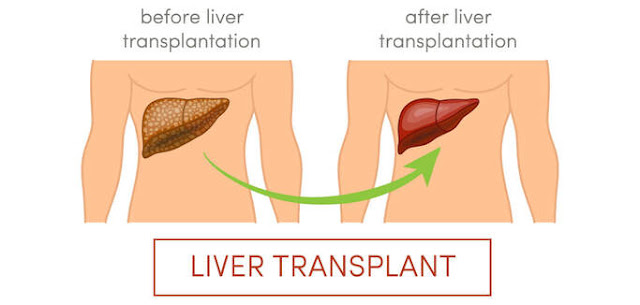Liver Transplant: Leap Towards A Longer And Better Life
Liver
transplant is a surgical procedure that is performed on patients suffering from
end-stage liver disease, for improving the quality of life, as well as, for
adding some more years to it. It is usually the last resort of treatment when
all other options fail to give positive results. At present, liver transplant in India is in its
golden period with more than 25,000 transplants performed annually.
Undergoing
a liver transplant is definitely not a small deal and you have to prepare for
it both physically as well as mentally. On top of that, finding the right donor
can also be a cause of concern. However, the Best hospitals in India have their own organ banks where you can
register yourself and get informed as soon as they find a suitable donor. No
doubt liver transplant is a major surgery, but the use of cutting edge techniques
and equipment has uncomplicated the procedure and made it convenient for both
the patients as well as the doctors.
The liver
is the largest gland of the human body that carries out a plethora of important
functions which include the production of bile and detoxification of blood . The
normal functioning of the liver is crucial for our well-being, however severe
liver injuries and chronic diseases like acute Hepatic fulminant failure, Extrahepatic biliary atresia or hypoplasia, Sclerosing
cholangitis, Hepatic vein thrombosis, Hepatocellular Carcinoma, Cirrhosis and
congenital metabolic errors can drastically impact your liver and cause irreversible
damage. In such cases, medication alone will not be of any help and this calls
for the need for a transplant.
Depending
upon the portion of the liver affected, a liver transplant can be broadly
classified into two different types, i.e. partial liver transplant and total
liver transplant, both of which are offered at all the leading liver hospitals in Delhi.
Partial liver transplant
Partial
liver transplant, as the name suggests, is performed on patients whose liver
has been partly damaged. In such cases, only the damaged part of the liver is
replaced while the remaining portion is left completely intact.
A partial
liver transplant can be further classified into living donor transplant, deceased
donor transplant and split liver transplant depending upon the source.
Living
donor transplant- a small portion of the liver is taken from a healthy donor
who fills all the eligibility criteria. Since the liver has regenerative
properties, the donor’s liver grows back into its original form within a few
months.
Deceased
donor transplant- this is also known as orthotopic transplant. A small portion
of a healthy liver is taken from the body of a deceased donor who has
registered himself for the donation prior to his death.
Split
liver transplant- it is a type of orthotopic transplant in which the healthy
liver is split into two parts to be used for treating two different patients.
Total liver transplant
Total
liver transplant is performed on patients whose liver has been damaged
completely and there is no scope of retrieving any part of it. In such cases,
the liver is taken from a deceased donor. Before carrying out the transplant,
the doctors have to make sure that the liver is healthy and that the donor
wasn’t suffering from any chronic or life-threatening disease.
Before you
opt for a liver transplant, it is important to consider all the risks and
benefits and consult a specialist to make sure that you are eligible for the
procedure. A liver transplant can even be performed on children. After the
transplant, you will be asked to make certain healthy lifestyle modifications
and refrain from certain activities. The recipients are also required to take
anti-rejection medicines throughout their life to negate any risks of organ
rejection. Regular health check-ups are also mandatory for monitoring post-surgical developments and avoiding unnecessary
complications.




Comments
Post a Comment